European and American Basset Hounds are so similar in appearance that most people can’t even tell the difference. I mean, are they even different?
At first glance, these two hounds may seem identical. But, there are a few things that distinguish them.
Well, in terms of appearance, the European and American basset hounds are not significantly different.
The main differences between these two dog breeds lie in their size, skin and coat color, diet and nutrition, grooming needs, temperament, and health problems.
We will explain each of these differences below.
Buckle up and get ready to find out more about what makes the European Basset Hound different from the American Basset Hound.
The Basset Hound Breed
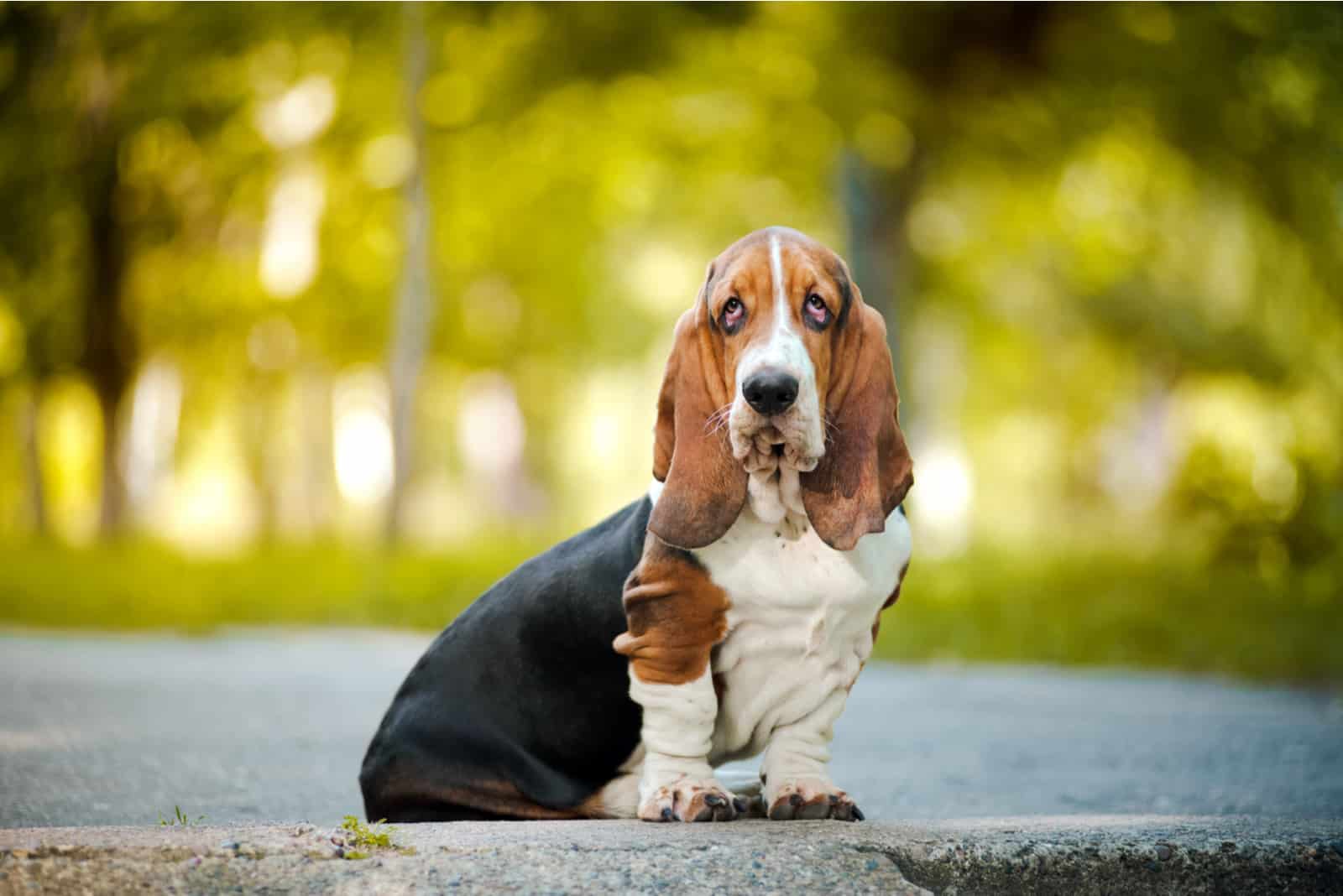
The Basset Hound dog breed is known as a very gentle and non-confrontational breed of dog.
Distinguished by its large, sturdy body, long ears, and short legs, the Basset Hound steals the show!
You might even recognize this hound breed from the famous “Hush Puppy” shoe brand. The Basset Hound face made lots of successful sales for this footwear brand!
Where did this dog breed get its name?
When you look at the body structure of a Basset Hound, you will notice that its whole body is positioned close to the ground. Because of this specific posture, this dog breed got its name, “Basset”, which is the French word for “low”. Its low stance is the significant breed standard.
View into the past
Researchers and historians believe that the modern-day European Basset Hound dog descended from a breeding imperfection discovered in Norman Staghound litters.
Norman Staghounds descended from St. Hubert’s Hounds that originate from Belgium. Researchers claim that the litters produced short-legged bloodhound puppies rather than typical bloodhound puppies.
This pooch became very popular during the French Revolution. Back then, people used Basset Hounds for hunting because they were excellent at this job. Their sharp nose would trace animal odors from miles away.
To this day, humans can still keep up with these hounds because of their short legs while they sniff around in search of food.
Different heritage
So, the first one to be developed was the European Basset Hound. Unfortunately, there is no information about how the European Basset Hound shifted to the United States and became the American Basset Hound. What we do know is that this floppy-eared pooch became a very popular family pet in the United States.
The European Basset was originally bred in France, dating way back. According to recent studies, it is believed that the European Basset Hound was developed around 700 C.E.
Some believe that during colonial times, immigrants imported a few European Basset Hound dogs. However, other records reveal that the first European Basset Hound appeared in the first part of the 20th century.
In the late 1800s, these dogs started appearing in the U.S. At around this time, the AKC (American Kennel Club) started registering Basset Hounds.
A few years later, in 1916, the AKC officially recognized the first Basset Hound dog as a breed. The Basset Hound was then recognized as a breed by the Basset Hound Club of America.
The shift from European to American Basset was likewise uncertain. There seems to be very little information on how the European basset hound exactly became an American breed.
Hopefully, by comparing the two, we will be able to make an accurate prediction.
European Vs. American Basset Hound: Main Differences
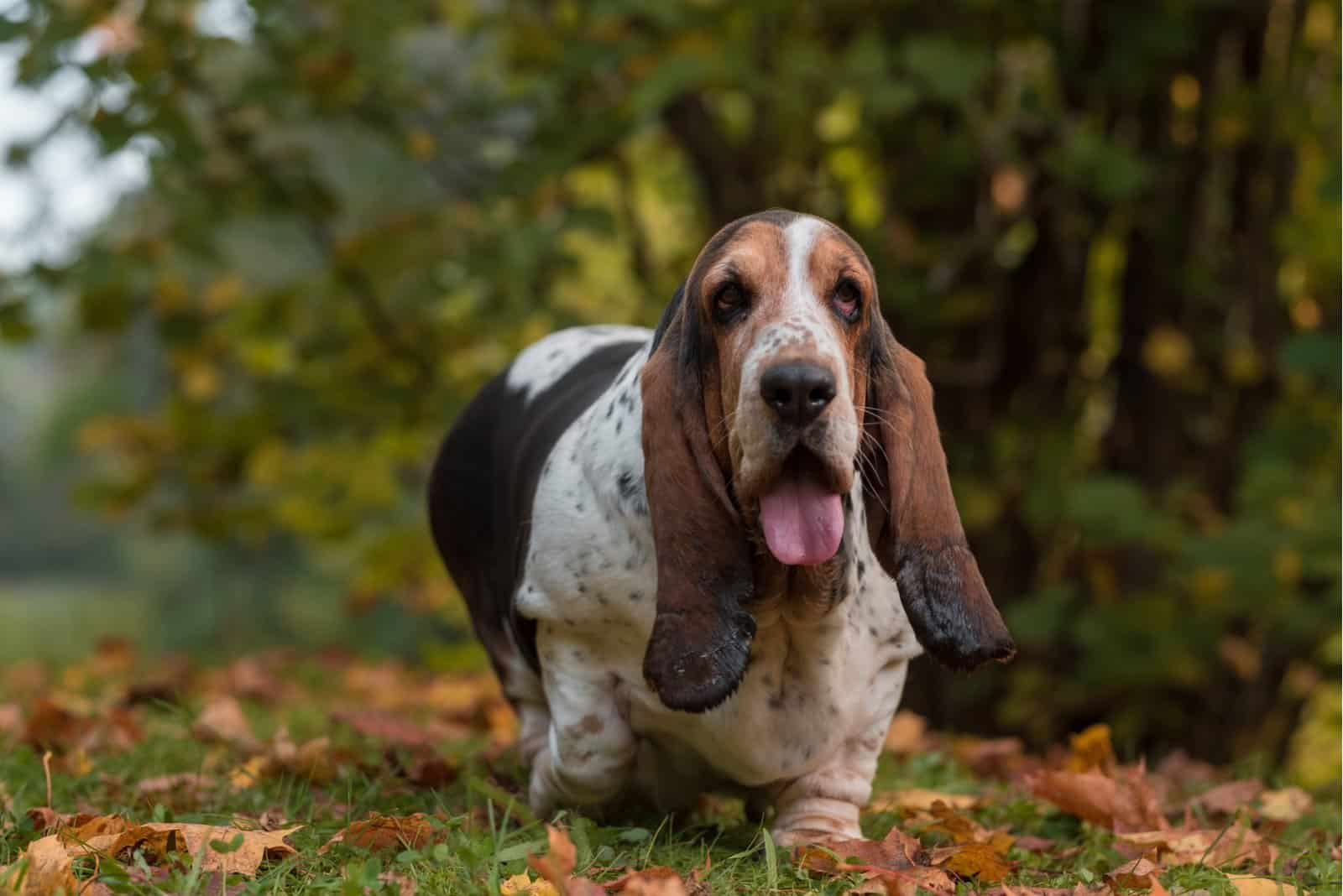
The European and American Basset Hound is the same breed of dog. Even though they are the same dog breed, there are but a few differences in their appearance.
For example, the main characteristic that you might notice that is different in the European Basset Hound is its wrinkles.
The European Basset Hound is more wrinkly than its American counterpart. This difference is noticed when you put these two Hounds next to each other and focus on their skin folds.
This is why the European Basset Hound requires a bit more care and maintenance than the American Basset Hound.
European Bassets are thought to be more favorable than the American ones because of their droopier appearance.
Here are some of the key differences in terms of breeding, size, appearance, and temperament.
Purpose of breeding
All canine members of the hound dog group were bred as hunting dogs.
The Basset Hound dog was originally bred to hunt small catches, such as rabbits, and it is still popular in some regions of the United States for this purpose.
Did you know about the Basset Hound’s extraordinary sense of smell?
Throughout selective breeding, this hound developed a very sharp nose. The Basset Hound’s sense of smell is so amazing it can smell its prey from 12 miles away!
Because of that, these great scent hounds were, and still are, often used by hunters to follow the scents of their prey when hunting.
Since both dogs were bred for the same purpose, there is no difference in breeding practices and programs between the European and the American Basset Hound dog.
Size
The Basset Hound dog is a medium- to large-sized, four-legged companion. Yes, that’s true – the Bassets aren’t small dogs.
Achondroplasia is a kind of dwarf development that causes specific short-leggedness in the Basset Hound dog breed. Because of its size, the Basset Hound feels small in comparison to you, so it will try its hardest to blend in.
A full-grown American Basset Hound reaches up to only 15 inches in height (but this doesn’t make it a small dog breed). The average American Basset Hound’s weight is between 40 and 80 pounds. Just like in all dogs, their weight greatly depends on their diet and gender. Adult males are usually larger than adult females.
An adult European Basset Hound weighs up to 75 pounds on average, and also reaches 15 inches in height.
So, when it comes to the size difference between these two – there isn’t really a big difference, except that the European Basset Hounds appear slightly larger than the American Basset Hounds.
Appearance
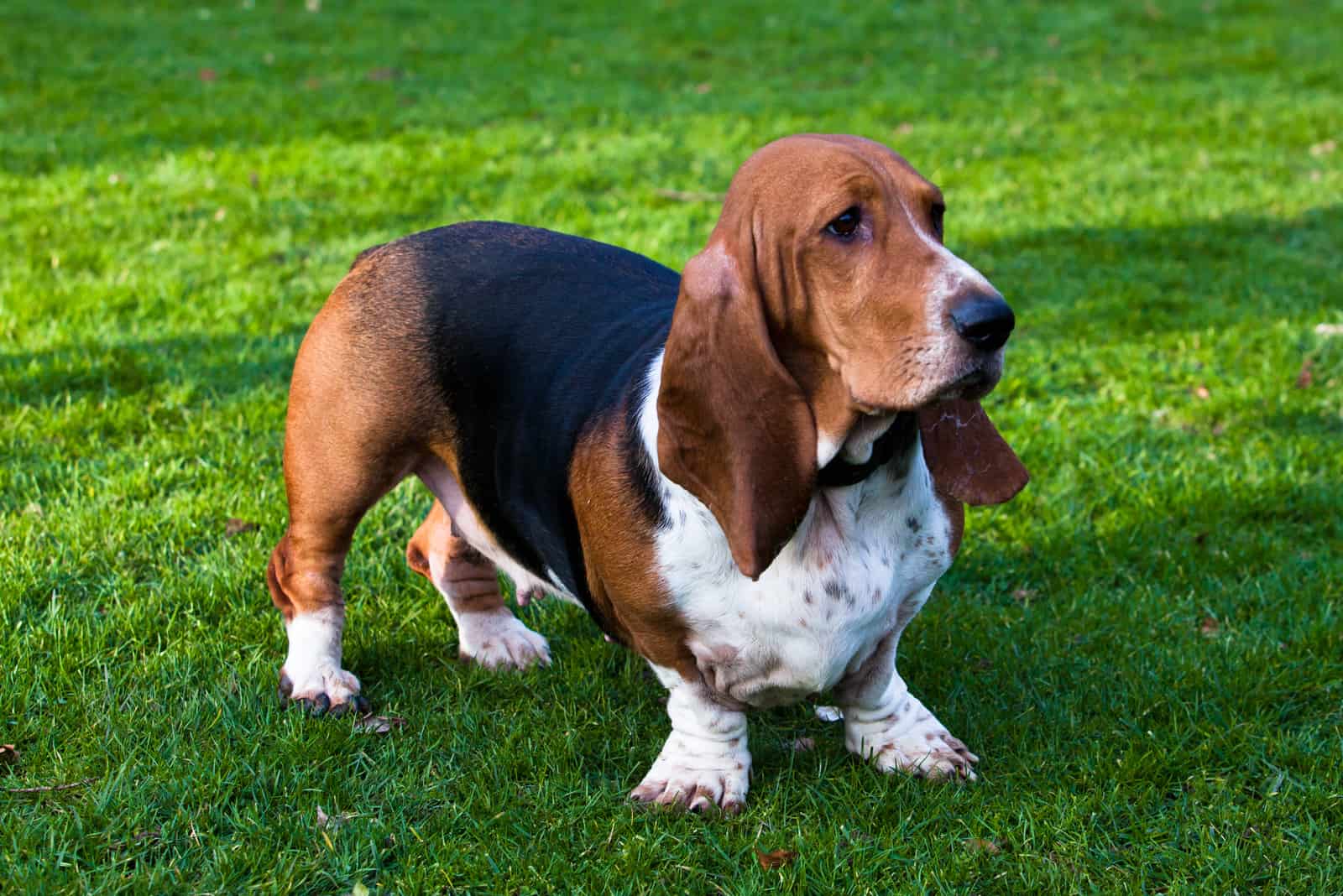
European vs American Basset Hound – are their looks different or similar? Well, they are almost the same.
Some Basset Hound owners who have owned both the European and the American Basset Hound still have a hard time telling which one is which.
Even though these two hound dogs share many similarities, you can still differentiate them from one another.
There are a few things we’d like to mention.
Body
Both dog breeds have a sturdy body that is pinned lower to the ground.
Their skeleton is massive and their body is muscular. Even though they are visually small dogs in terms of size, the Basset Hounds are considered generally large dogs in terms of body structure.
Don’t let the wrinkles on its body fool you – the Basset Hound is a very muscular dog. Sure, it loves to lay around and be lazy quite often, but this dog also likes to run around and maintain its shape.
The body type of a European and an American Basset Hound is almost the same. They’re short, sturdy, and muscular, with long floppy ears and a droopy face. Their paws are quite wide, like in all hunting dogs that love to dig!
Unique characteristics
There are two things to consider: the wrinkles and the body size. We already mentioned the body size, so we’re going to talk about wrinkles that distinguish the European Basset Hound from the American Basset Hound.
When you look closely into the face of a European Basset Hound, you will notice its whole skin is “dripping” downwards. This is because its skin folds are heavier than the ones in the American Basset Hound.
So, the European Basset Hounds have a somewhat “sadder” facial expression than their American counterparts. Excessive drooling may occur because of the specific head structure and skin folds around the mouth.
Now that we made that clear, compare the European to the American Basset Hound and try to spot the differences!
Coat colors
The European and the American Basset Hounds both have a smooth, short, and firm coat that is generally simple to maintain.
The majority of the Basset Hounds come in black, yellowish-brown, and white coat colors.
There are other types and color variations of the Basset Hound’s short coat. With red and white combinations (white being the main color, with red patterns), dark red and white (complete red, with white tail and legs), these dogs stand out in the crowd.
If we were to compare it with another dog, we’d say it has almost the same coat colors and patterns like the Beagle.
Come to think of it, Basset Hounds look like droopier versions of Beagles!
Personality and Temperament
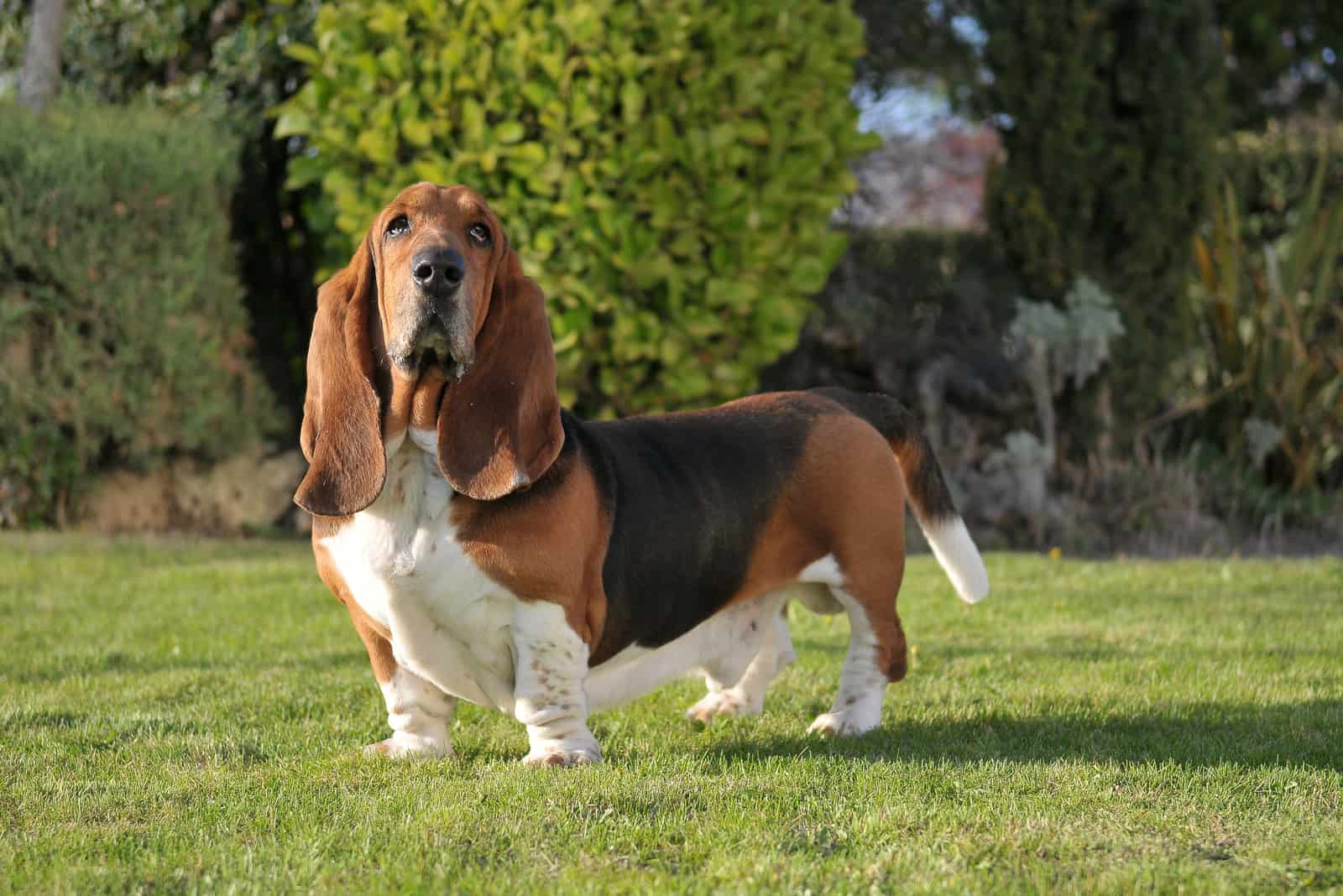
The Basset Hound Breed is likely best recognized as a real quiet breed, but it is much more than that.
With his calm demeanor and small legs but aristocratic stance, the Basset Hound is a beloved family friend as well as a slow-moving, but sensitive hunter.
Both the European and the American Basset Hound have many things in common. Not only do these two dogs look alike, but they also share the same personality traits. There is no difference in temperament between these two dogs.
When you properly train your Basset Hound, you get a very kind and loving canine friend that goes along with everyone! What makes the Basset so special is that it is very calm and gentle around children and other pets.
Perhaps its biggest flaw is the tendency to whine and drool when it is lonely. Many dogs drool if they are hot or if they’re expecting food or yummy treats. So, this “flaw” isn’t really something that you can necessarily link to unwanted behavior.
Early socialization is a must when it comes to Basset Hounds. This dog breed has inherited a prey drive. Even though Basset Hounds are laid-back and their prey drive is pretty low, they still might want to chase prey-like animals.
However, if you raise a Basset Hound puppy right and give it lots of love, this pooch will become a wonderful family dog, just as happy in your company as it is when it is hunting.
Health Problems
The European and American Basset Hounds are purebred dogs, and all purebred dogs come with inherited health problems. Different breeding programs developed different health problems in these purebred dogs.
Most health problems in both dog breeds come from their wrinkly and excessive skin, as well as their size and weight.
The skin on its head is wrinkly and heavy, pushing the lower eyelids downwards. This exposes the eye’s mucous membrane, which is now prone to many pathogens and microorganisms from the environment.
So, some health problems in the European and the American Basset Hound to keep an eye out for are:
• glaucoma
• entropion and ectropion
• gastric torsion
• hip dysplasia (especially in elbows and ankles)
• bloat
• ear infections
• skin rashes
• obesity
The health of your Basset Hound dog will depend on the care you provide it with. Because these dogs are prone to inherited health problems, you might find yourself frequently visiting the vet.
However, there won’t be any issue as long as you pay attention to your Basset Hound’s needs.
A Basset Hounds’ lifespan ranges from eight to 15 years. Keep in mind that its lifespan is greatly influenced by its overall health condition.
Regular exercise followed by proper nutrition will make your dog healthier and happier.
Which One Is Better: The European Or The American Basset Hound?
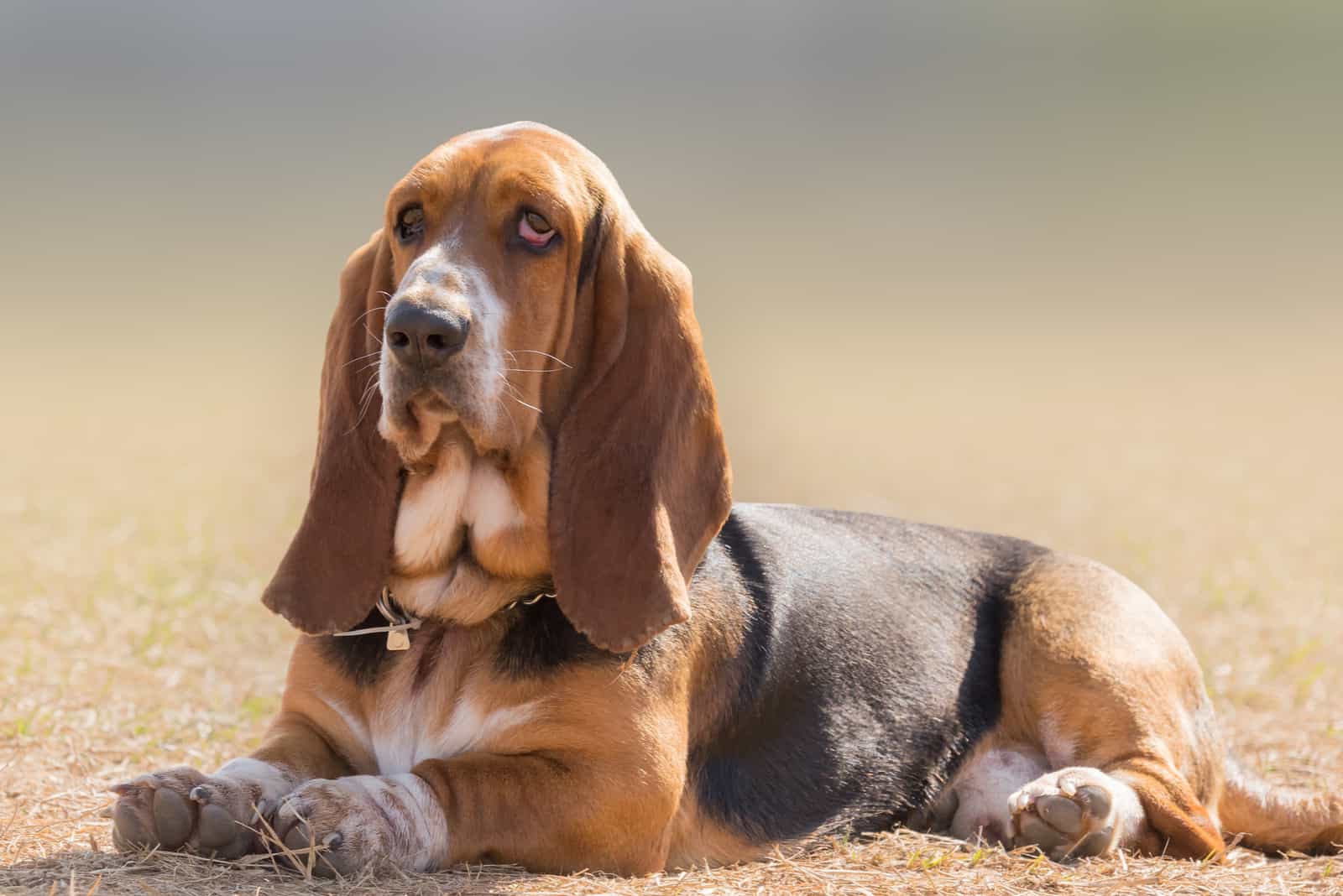
Both dogs make amazing canine companions, so giving you a right answer for this question is almost impossible.
Because there are very few differences between the European and the American Basset Hound, deciding between these two hound dogs will be a no-brainer.
Both dogs require lots of care, exercise, and training, and both are very affectionate pooches that share the same personality traits.
The Basset Hound breed is a medium to large dog breed, so you shouldn’t expect a small dog. As we mentioned before, the European Basset Hound is going to be a bit larger than the American Basset Hound, whereas the American Basset Hound will have a few wrinkles less than the European Basset Hound.
So, in terms of grooming and maintenance, you should choose a less wrinkled American Basset Hound. But, you can never tell how your little Basset Hound puppy will look when it grows up.
If you decide to get a dog from this breed, you should be prepared for all the responsibilities and care that come along with it.
Let’s check out what you will have to incorporate into your daily routine when living with a Basset Hound.
Grooming and maintenance
When it comes to grooming and maintenance, there is one thing we want to point out – the wrinkles!
We already learned that these wrinkles are what make the European Basset Hound different from the American Basset Hound. Now, we have to learn how to take care of these pesky skin folds that may cause problems for your little European Basset Hound if not cleaned regularly.
Take care of those wrinkles!
I can’t stress enough how important it is to clean and maintain your Basset Hound’s wrinkles daily.
Because of the larger wrinkly folds, the European version is more prone to different rashes, as well as ear and eye issues. Moreover, the bacterial development beneath the droopiness might damage these vital organs.
Bacterial skin infections are stinky! If your Basset Hound develops a bacterial or fungal skin infection, you will notice it by the odd smell.
Wrinkles on the face, as well as the bales left by the Basset Hound are very easy to maintain. Each day, you can take a clean, soft cloth or cotton wool soaked in lukewarm sodium chloride solution (salt water) and clean between its wrinkles and folds.
Don’t forget about the other wrinkles on its body. Loose skin isn’t only present on the head; it’s all around the Basset Hound’s body! Make sure to check the paws for possible sores and rashes between the toes.
If not taken care of properly, its irritated skin can lead to many health complications. Some skin disorders include ringworm, eczema, skin rashes, and acne.
It’s all about the ears!
The Basset Hound’s ears are very unique. Very long and floppy, the external ear covers the whole ear canal. Their long ears often drag on the ground and get dirty very quickly. Naturally, ear infections are a common problem of this breed of dog.
The explanation of common ear infections is very simple. In Basset Hounds, ear infections usually develop because the air cannot circulate well inside the auditory canal.
The air accumulates and stays within the ear canal. And, air is not the problem as much as moisture is. Because of the accumulated moisture inside the ears, the covered flaps can create the perfect breeding ground for germs and bacteria.
To prevent any ear infection from happening, clean their ears at least once a week in consultation with your veterinarian.
Cleaning your Basset Hound’s ears is a relatively easy task.
You should start by gently wiping the external ear in order to get rid of any dirt. For this, you can use a cotton wool pad or a soft, clean cloth. If there is any redness, don’t irritate the skin any further.
After that, you can pour some dog ear-cleaning solution into the ear and massage it until it’s deep in the ear canal. It’s best that your veterinarian shows you first how it’s done.
Brushing and bathing
Brushing the Basset Hound’s double-layered coat with a brush with firm teeth and a combing glove is all that is needed to keep its fur in extremely good condition.
The Basset Hound dog sheds all year round, but if you brush it every week, you shouldn’t have any problem with finding loose hair everywhere.
While brushing them, pay attention to whether there are any wounds, rashes, or signs of some infections such as redness, sensitivity, or inflammation of the skin, ears, nose, eyes, or paws.
Due to their short layers of hair which are resistant to dirt and water, Basset Hounds rarely require bathing. Because they’re adventurous little dogs, they might get themselves into some mud and dirt.
You might notice that this pooch likes rolling on the ground. That’s when you’ll definitely want to give it a good bath. Just don’t overdo it because of their sensitive skin. Frequent bathing will strip off the natural oils from their skin, leaving it fragile and dry.
Trimming nails
The Basset’s nails should be cut as needed, preferably two or three times a month. This will depend on the Basset’s nail growth rate.
If you can hear their nails striking the floor, this indicates that they are extremely long and that the nails need trimming.
Short nails keep the pet’s paws in good shape and reduce the chance of an injury. It’s also easier for you to keep the nails short all the time.
But, be careful: dogs’ nails are full of blood arteries. Abundant bleeding will occur if you cut the nails too short, affecting the nail quick.
If you are unsure of how to do it, either take your Basset Hound to a veterinarian or your dog groomer.
Basset hound puppy cost
The American Basset Hounds are priced between $600 and $800, although purebred American Basset Hounds may cost up to $1,500.
Basset Hounds are also very expensive to keep. Most future owners aren’t aware of this fact. Yearly costs of owning a Basset Hound range between $1,400 and $2,650 for dog food, training, grooming, and medical care.
According to reputable breeders, the European Basset puppy’s cost can range from $600 to $1,200 on average.
Related: 4 Most Reputable Basset Hound Breeders In Ontario (2022)
Champion bloodlines of the Basset Hound breed may cost up to $2,000 based on past competitions won by the pup’s champion parents.
Make sure to research reputable breeders who breed their dogs with care, developing healthy and happy Basset Hound puppies.
Despite being purebred dogs, Basset Hounds may be found in shelters or under the care of rescue organizations. Before buying a dog, we recommend visiting your local dog shelter!
Final Thoughts
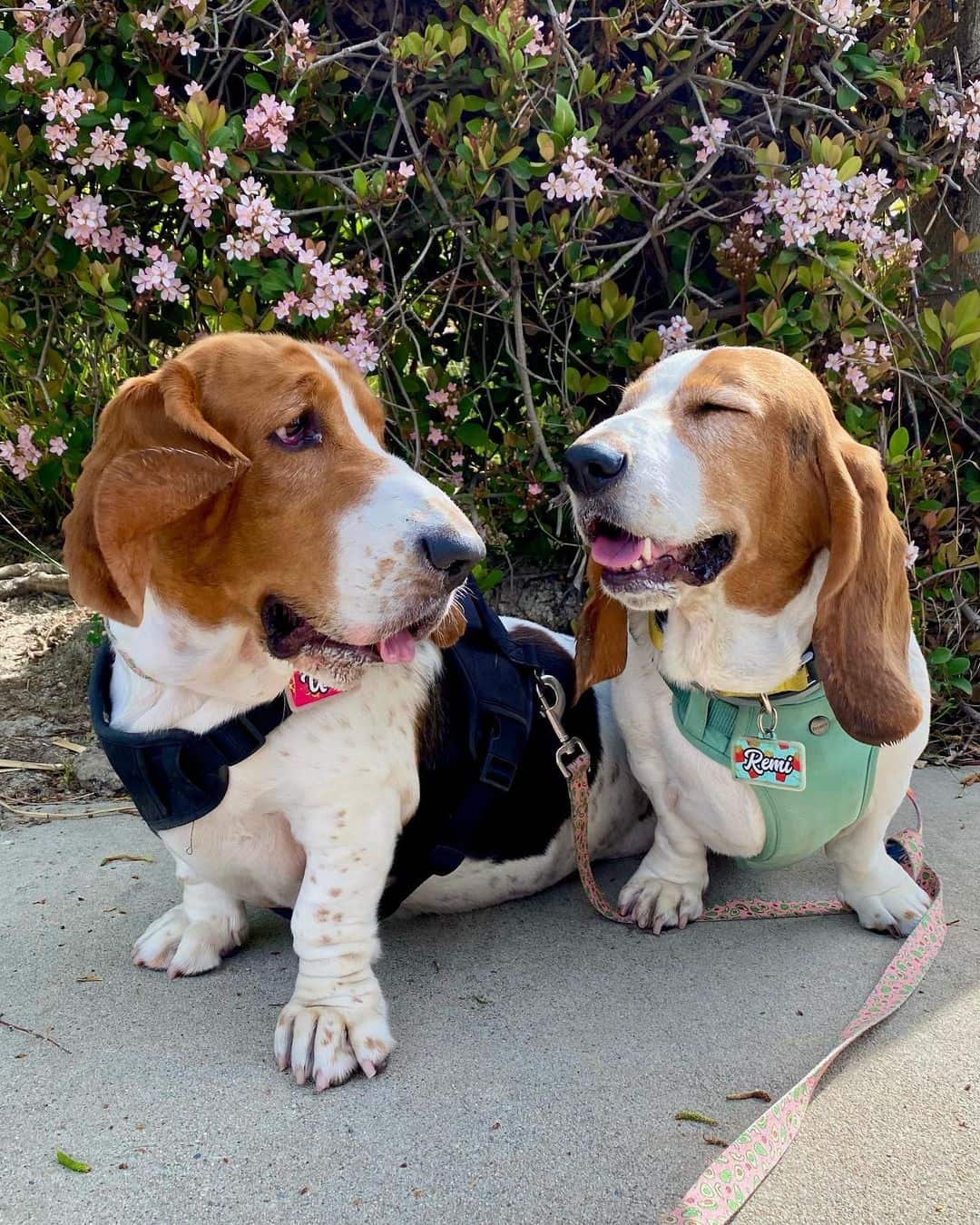
Photo from: @longearedladies
One thing is certain: the Basset Hound is not only a superb tracker and hunter, but also a devoted companion.
Although this pooch might look grumpy and serious, the Basset Hound is a very social, calm, and playful four-legged canine friend.
The Basset Hound dog is full of love for people – it enjoys the presence of children and gets along very well with other dogs and pets.
The Basset Hound is very kind to new faces. Not only is this pooch gentle towards children, but it is also nice to strangers. But, don’t think that this droopy little guy is all too carefree when it comes to unknown people. If a Basset Hound dog senses danger, it will bark loudly to alert its owner of potential threats.
Because this is an outgoing dog breed, Basset Hounds will need lots of new human and animal friends. This dog enjoys company, so if you decide to leave it alone for a while, it is better to have another dog friend in the house.
Read Next: Miniature Basset Hound: A Full Guide To The Cutest Low-Rider















